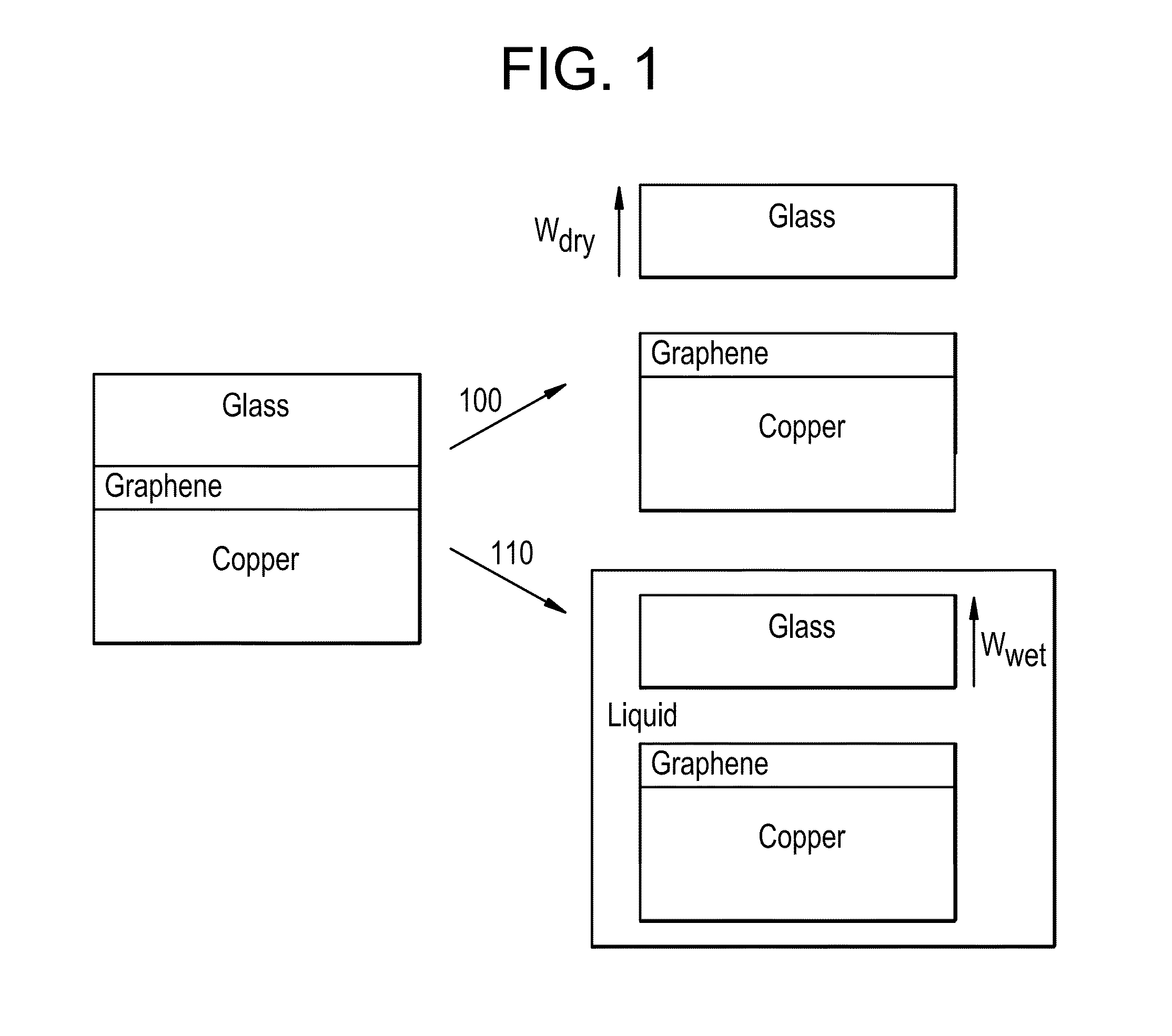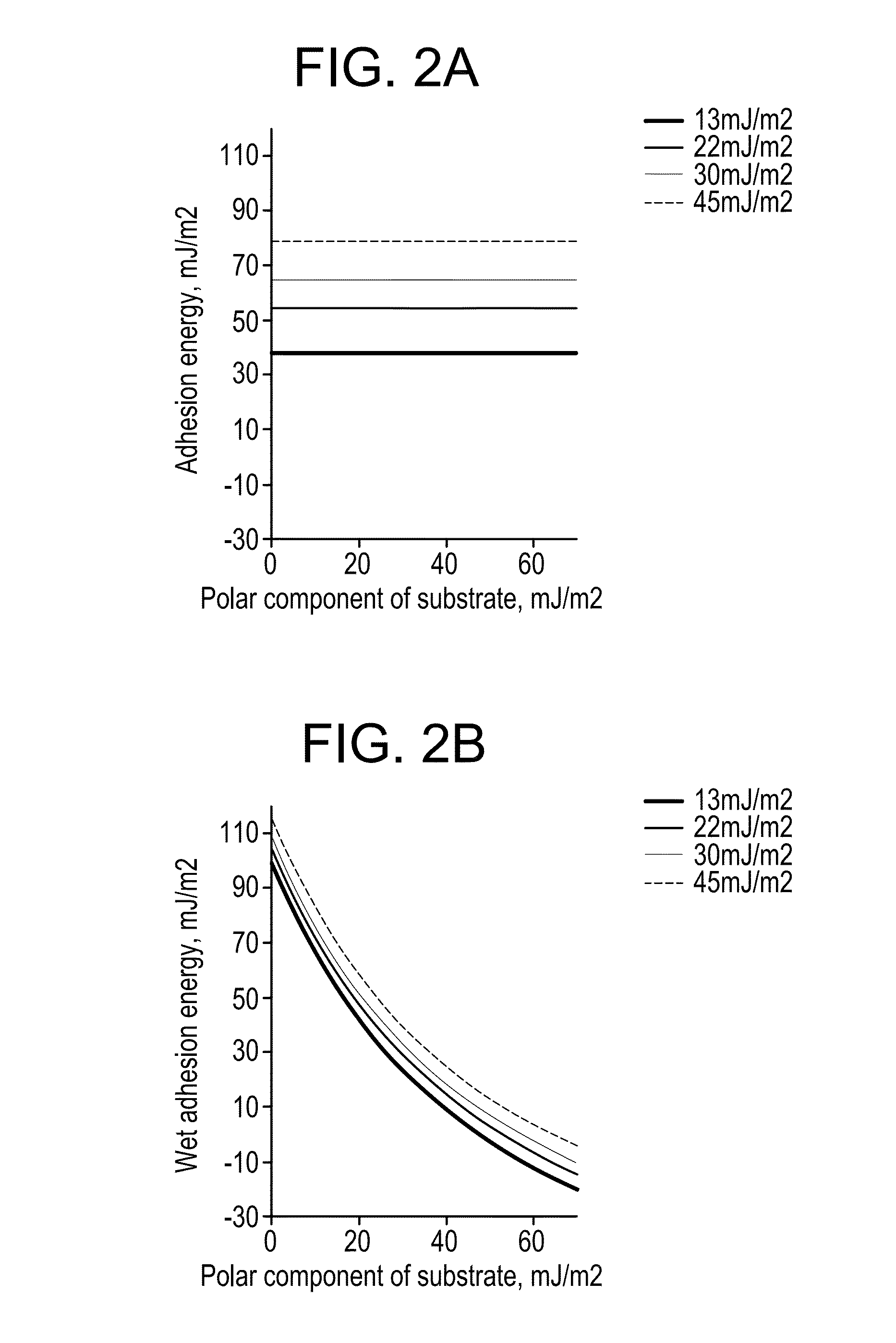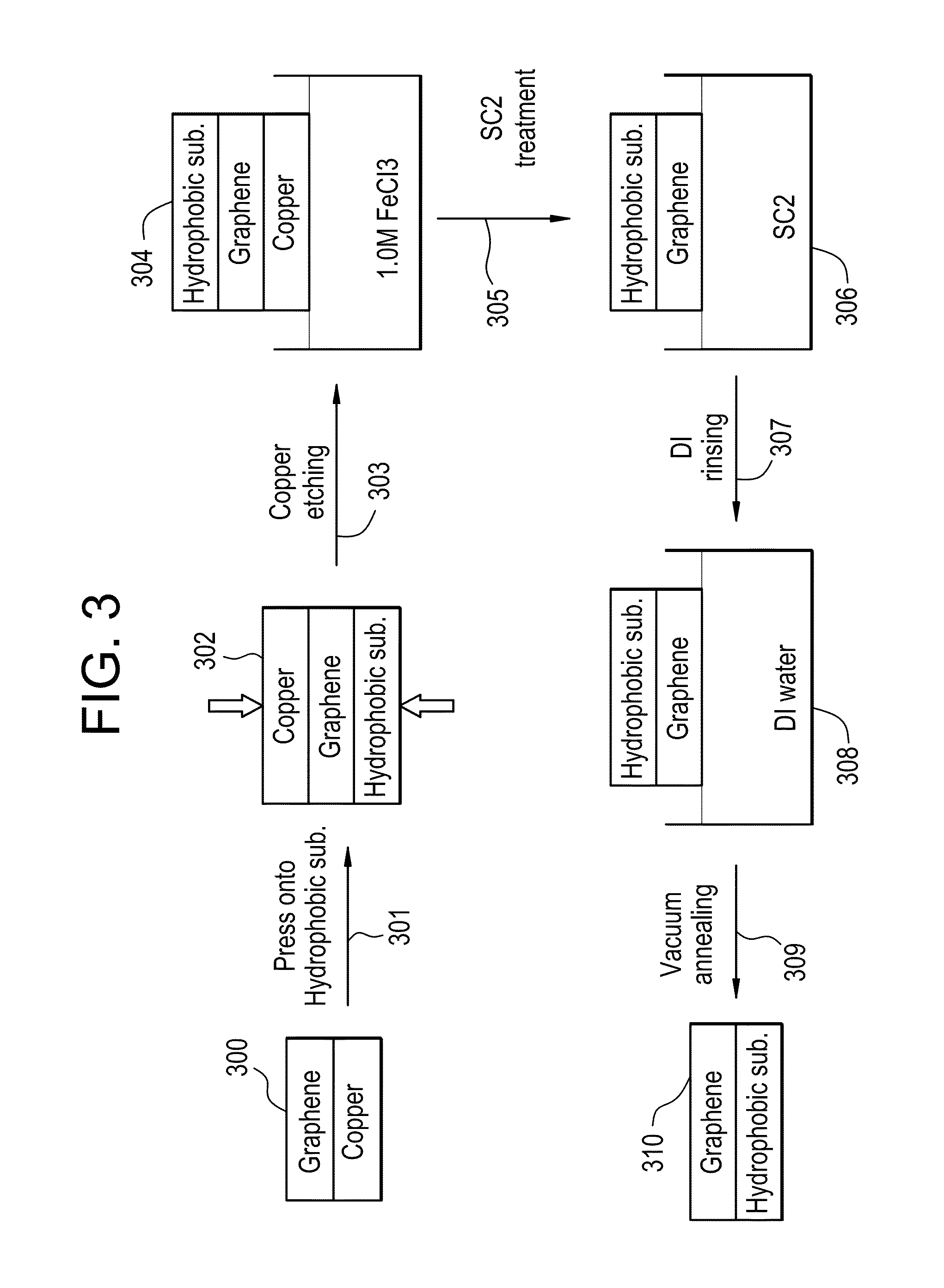Graphene and polymer-free method for transferring CVD grown graphene onto hydrophobic substrates
a technology of hydrophobic substrates and graphene, which is applied in the direction of ceramic layered products, layered products, chemistry apparatus and processes, etc., can solve the problem of unmet needs for improving processes
- Summary
- Abstract
- Description
- Claims
- Application Information
AI Technical Summary
Benefits of technology
Problems solved by technology
Method used
Image
Examples
example 1
Transfer of Monolayer Graphene onto Octadecyltrichlorosilane (OTS) Treated Willow® Glass
[0052]In Example 1, OTS-treated Willow® glass samples 25.4×25.4 mm×150 μm thick are used for the transfer. The graphene source is CVD-grown monolayer graphene on copper obtained from Graphenea, Spain and is used as received. Prior to silanization, the Willow® glass samples are cleaned according to the surface cleaning procedure described above. Silanization of the samples is performed by dip coating in OTS solution containing 1.5 vol % OTS in Toluene for 5.0 hours. Post-treatment steps include rinsing in hexane and ethanol and baking at 110° C. for 30 min. Monolayer graphene is transferred onto the OTS-treated glass according to transfer procedure described in Step 3 above. The transferred films are characterized by Raman spectroscopy, and UV-vis spectrophotometry to respectively determine the continuity and quality and optical transmittance of the films. The results show that the transferred gra...
example 2
Transfer of Monolayer Graphene onto Perfluorooctyltriethoxysilane (PFOTS)-Treated Willow® Glass
[0053]In Example 2, PFOTS-treated Willow glass samples 25.4×25.4 mm ×150 μthick are used for the transfer. The graphene source and the pre-treatment of the Willow® glass samples are the same as in Example 1. Silanization of the samples are performed by dip coating in PFOTS solution containing 1.5 vol % PFOTS in methanol for 1.0 hour. Post-treatment steps include rinsing in methanol and baking at 110° C. for 30 min. The graphene transfer and characterization of the transferred film are performed in the same manner as in Example 1. The film's quality and coverage are the same as in Example 1 (see FIGS. 7A and 7B).The properties of the transferred film are presented in Table 2.
example 3
Transfer of Monolayer Graphene onto OTS-Treated EXG Glass
[0054]In Example 3, OTS-treated EagleXG® (“EXG”) glass samples 25.4×25.4 mm×150 μm thick are used for the transfer. The graphene source and the pre-treatment of the EXG glass samples are the same as in Example 1. Silanization of the samples are performed by dip coating in OTS solution containing 3.2 vol % OTS, 2.5 vol % HCI % in toluene for 1.5 hours. Post-treatment steps includ rinsing in toluene and ethanol and baking at 110° C. for 30 min. The graphene transfer and characterization of the transferred film are performed in the same manner as in Example 1. The film is continuous with very low density of defect (see FIGS. 8A and 8B). The properties of the transferred film are presented in Table 2.
PUM
| Property | Measurement | Unit |
|---|---|---|
| Length | aaaaa | aaaaa |
| Fraction | aaaaa | aaaaa |
| Pressure | aaaaa | aaaaa |
Abstract
Description
Claims
Application Information
 Login to View More
Login to View More - R&D
- Intellectual Property
- Life Sciences
- Materials
- Tech Scout
- Unparalleled Data Quality
- Higher Quality Content
- 60% Fewer Hallucinations
Browse by: Latest US Patents, China's latest patents, Technical Efficacy Thesaurus, Application Domain, Technology Topic, Popular Technical Reports.
© 2025 PatSnap. All rights reserved.Legal|Privacy policy|Modern Slavery Act Transparency Statement|Sitemap|About US| Contact US: help@patsnap.com



